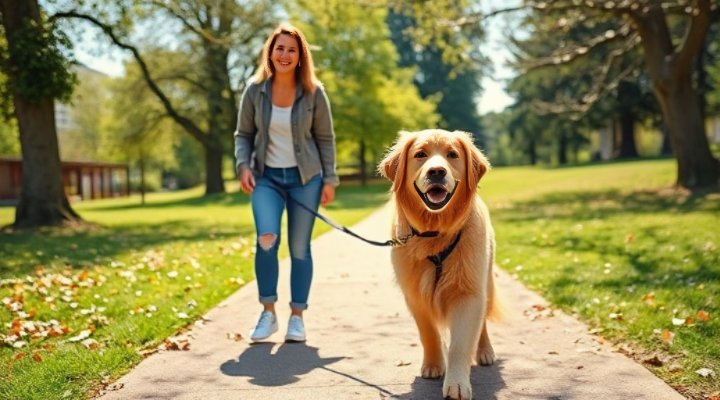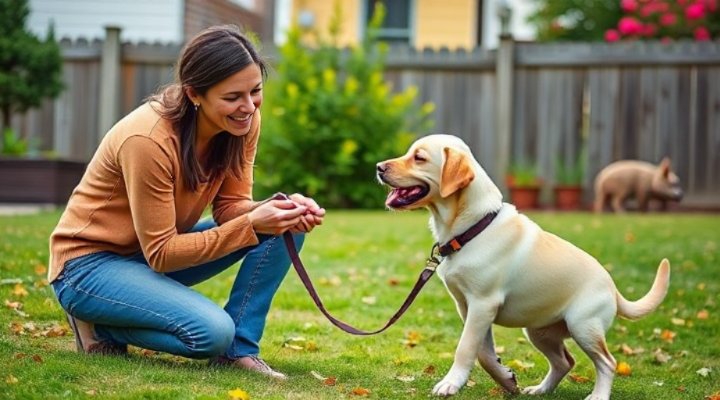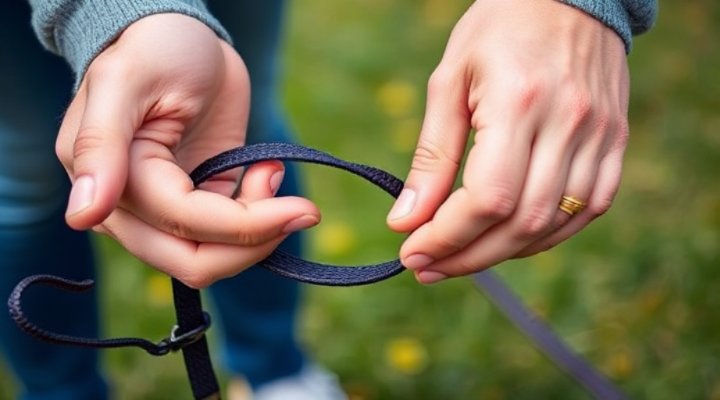Teaching your dog to walk politely on a leash is one of the most valuable skills you can share with your furry companion. Not only does it make daily walks more enjoyable, but it also ensures their safety in various environments. Whether you’re working with a bouncy puppy or an older rescue dog who needs to learn new habits, the process of teaching leash manners follows similar principles.

Understanding Why Dogs Pull on Leashes
Before we dive into how to teach your dog to walk on a leash, it’s important to understand why dogs pull in the first place. Dogs naturally want to explore their environment at their own pace, which is often faster than ours. Additionally, the tension on the leash can actually encourage pulling behavior through what’s called the ‘opposition reflex’ – when they feel pressure, they instinctively pull against it.
This is why simply yanking back on the leash rarely works long-term. Instead, we need to teach our dogs that walking calmly by our side is more rewarding than pulling ahead. As noted in our long lead dog training guide, giving your dog some freedom while maintaining control can be an effective middle ground during training.

Essential Equipment for Leash Training
The right equipment can make a world of difference when teaching your dog to walk on a leash. While a standard flat collar might work for some dogs, others benefit from specialized tools:
- Front-clip harness: Redirects your dog’s momentum when they pull
- Head halter: Gives gentle control over your dog’s direction
- Standard 6-foot leash: Provides optimal control during training
- Training treats: Small, high-value rewards for good behavior
According to the American Veterinary Society of Animal Behavior, positive reinforcement methods using treats and praise are the most effective way to teach leash manners. Avoid choke chains or prong collars, as these can create negative associations with walking.

Step-by-Step Guide to Teach Your Dog to Walk on Leash
1. Start Indoors Without Distractions
Begin your training in a quiet, familiar environment like your living room. Attach the leash and let your dog get used to the feeling of wearing it. Reward them for staying near you with treats and praise. This foundation is similar to the principles we discuss in our teach dog to stay guide.
2. Practice the ‘Let’s Go’ Command
Choose a consistent phrase like “Let’s go” to signal walking time. When your dog is beside you with a loose leash, say the command, take a few steps, and reward them for following. Gradually increase the number of steps between rewards.
3. Master the ‘U-Turn’ Technique
When your dog starts to pull, immediately stop walking and turn 180 degrees in the opposite direction. This teaches them that pulling makes the walk go backward, not forward. Be patient – this might mean doing dozens of turns during a single walk at first!

4. Add Real-World Distractions Gradually
Once your dog is doing well indoors, move to your backyard, then quiet streets before busier areas. The importance of dog socialization classes becomes evident here, as well-socialized dogs typically adjust better to various environments.
5. Be Consistent With Rewards
Always reward your dog when they’re walking nicely, even after they’ve mastered the skill. Random reinforcement helps maintain good behavior long-term. Small treats, verbal praise, or brief petting all work well.
Troubleshooting Common Leash Walking Problems
Problem: My dog pulls toward other dogs/animals.
Solution: Create distance and reward your dog for focusing on you. Gradually decrease the distance as they improve.
Problem: My dog stops and refuses to move.
Solution: Make yourself more exciting with happy talk or treats. Avoid pulling, which can make them resist more.
Problem: My dog gets overly excited when the leash comes out.
Solution: Practice calm behavior before walks. Only proceed when they’re settled, as we recommend in our train dog not to jump guide.

Advanced Leash Walking Tips
Once your dog has mastered basic leash manners, you can work on more advanced skills:
- Heel position (walking precisely by your side)
- Automatic sits at curbs
- Polite greetings with other dogs and people
- Walking past distractions without reacting
Remember that every dog learns at their own pace. Some may pick up leash walking in a few weeks, while others might need several months of consistent practice. The key is patience and maintaining a positive attitude. As the American Kennel Club emphasizes, training should always be a bonding experience between you and your dog.
For more specialized training needs, consider our rescue dog training guide, which addresses unique challenges with adopted dogs.
Final Thoughts on Teaching Your Dog to Walk on Leash
Teaching your dog to walk politely on a leash transforms daily walks from stressful struggles into enjoyable bonding time. While the process requires patience and consistency, the results are well worth the effort. Remember that setbacks are normal – even well-trained dogs might have off days. The most important thing is to keep training sessions positive and end on a good note.
With these techniques, you’ll soon have a canine companion who walks proudly by your side, making every outing a pleasure for both of you. Happy training!
Related Keywords: dog leash training, stop dog pulling, loose leash walking, teach puppy to walk on leash, dog walking techniques, leash manners, dog obedience training

